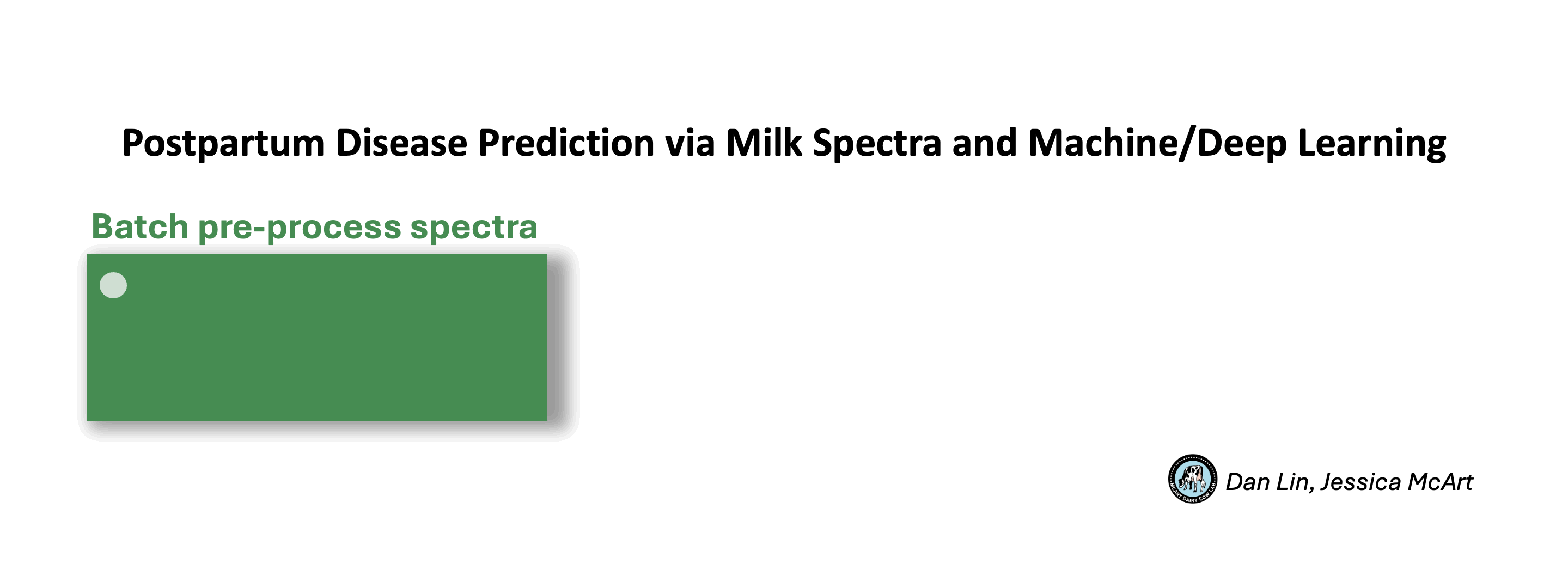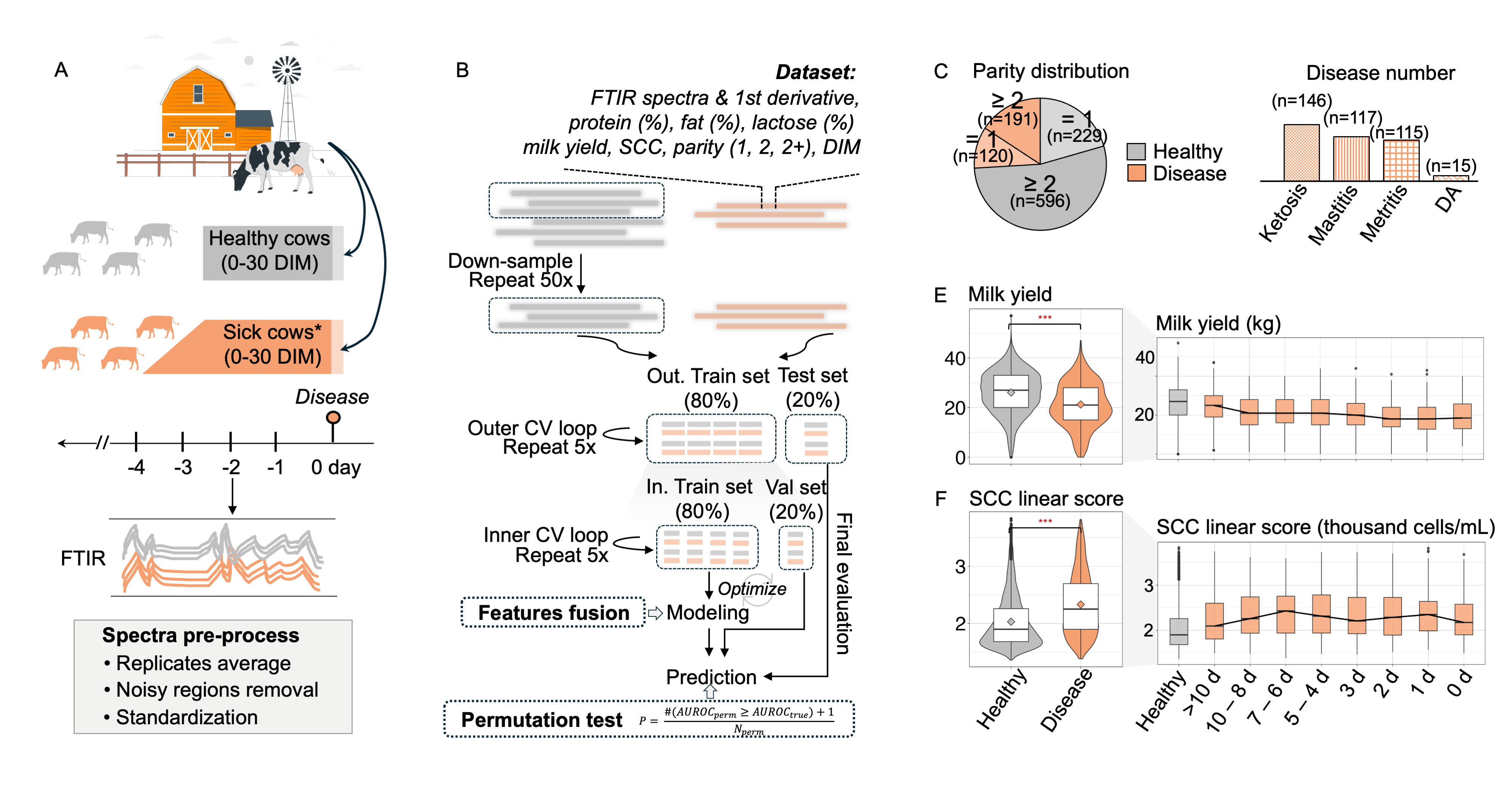Predicting Early-lactation Diseases in Cows with Milk FTIR

This study aims to predict subsequent postpartum diseases in dairy cows using milk spectra collected from daily milking procedures, with a long goal of supporting large-scale health monitoring program in modern dairy farms. We found during early lactation, milk FTIR spectra in high-risk cows initially followed trends similar to healthy cows—rising then slightly declining fat absorbance, decreasing protein, and increasing lactose. As disease progressed, spectral patterns diverged, with higher fat and lower protein and lactose absorbance in diseased cows. Cows with or at risk of metritis may show greater spectral deviation from healthy cows than those with or at risk of mastitis.
These findings highlight the potential of milk FTIR spectra for both early disease prediction and disease-type classification during the transition period. Across two complementary analyses, we applied distinct validation frameworks tailored to different clinical use cases: a retrospective setting using repeated down-sampled double cross-validation anchored to diagnosis date, and a prospective setting using repeated leave-one-out cross-validation under varying modeling strategies relative to parturition. Both frameworks incorporated permutation tests and enabled efficient spectral preprocessing and model training. Together, they demonstrate the feasibility of milk FTIR-based prediction of overall health status, metritis, and clinical mastitis on a commercial dairy farm in upstate New York.
Why We Do This Research

Milk FTIR could be a non-invasive, direct and cheap health indicator.
Considering that the alterations in milk composition throughout lactation mirror the physiological state of dairy cows, as well as the advantages of large-scale milk analysis without additional farm management changes, milk FTIR spectroscopy shows potential to assist health monitoring and disease warning in practice.

Daily FTIR + Machine Learning = Real-time and Precise Health Condition Prediction!
Our projects combine daily milk FTIR spectra for each dairy cow with ensembles machine learning models to support a real-time and precise prediction. Under this overarching goal, we are conducting a series of research that further validates the feasibility of spectra and technology, generates benchmark dataset, and proposes computing systems.
Publications
What We Can Help
Research Team
Note that the affiliations of the authors are based on the period of participation in the project and may not reflect the latest information.






